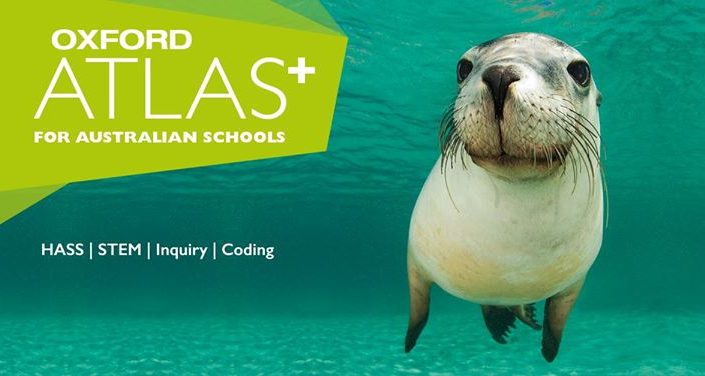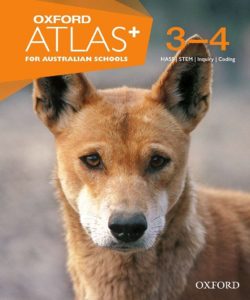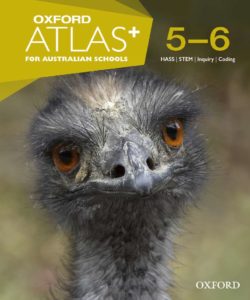In the past, the atlas was firmly at home in the Geography classroom. Students learned the North Pole from the South, where to find the equator and that there really is a place called Timbuktu.
With the introduction of the new Oxford Atlas+ for Australian Schools, it is clear that the atlas has come a long way. Oxford Atlas+ is as useful in the Technology, Business and Economics, History, Science and Civics and Citizenship classroom as it is in the Geography classroom.
A feature that has gained the most attention from teachers has been the technology and coding activities, which are new to the latest edition of the atlas and available on the online teacher and student dashboards.
Two types of technology activities included on the online dashboards are ‘plugged’ coding interactives for years 3 to 6, and ‘unplugged’ activities for years Foundation to 6.
The plugged coding interactives feature step-by-step digital coding activities that cover the Technologies curriculum and require a computer. They include instructions that can be downloaded and printed or viewed at each stage of the coding process, and the student dashboard allows students to log in to their own account to complete these.
Students can work through the coding activities and then swap with a partner to run the codes. One example is the year 5–6 ‘Earth in Space’ unit, where the completed code places the planets in order from the Sun.
The unplugged activities include lesson plans with activity sheets for students to complete, and cover the Technologies curriculum without requiring a computer. For example, one activity teaches students about Morse Code, with students creating their own Morse Code message to share with a partner. Some unplugged activities teach students coding skills, with some including links to videos and external websites, and, in some instances, the option of making the lesson a ‘plugged’ activity.
The coding interactives and unplugged activities support the Technologies curriculum, covering Australian Curriculum content, as well as state specific curricula for Western Australia, New South Wales and Victoria. What makes the coding activities in Oxford Atlas+ stand out is that they are linked to the topic themes while teaching various types of coding at the same time.
While coding might form part of the future digital careers of today’s students, it can be intimidating for teachers who might be more familiar with the traditional atlases. However, Oxford Atlas+ offers visual step-by-step instructions to make these activities easy for teachers to administer and for students to follow. The teacher and student dashboards also mean that students can work independently, making teaching straightforward for those who are not as familiar with coding.
Teachers also love the cross-curricula nature of the Oxford Atlas+, meaning they can cover multiple subjects, ranging from STEM subjects to History or Geography, in one lesson. For example, the ‘Earth in Space’ unit covers content descriptions for the years 5 and 6 Science, Maths and Technologies curricula. In a curriculum sometimes described as ‘crowded’ by teachers, this integrated approach saves teachers time and maximises students’ learning opportunities.
Oxford University Press’ Graeme Jordan said there were many features of the atlas that appealed to teachers.
“Teachers love that Oxford Atlas+ takes care of their planning and is a huge time saver for them. It includes term planners, lists of the curricula covered, detailed lesson notes, videos that link to topics, (and) the coding activities that link to the topics,” he said. “It’s a resource that offers so much to teachers and their students.”
Oxford Atlas+ also attracted the attention of judges at the 2018 Educational Publishing Awards Australia, winning the Primary Student Resource (Arts/Science/Humanities/Social Sciences/Technologies/Health and Physical Education/Languages) award.
Teachers can register to receive a digital sample of Oxford Atlas+ on the Oxford University Press website.




Leave a Reply